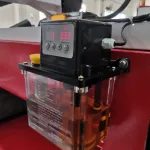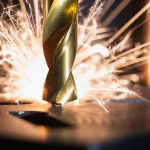What is a Thick Film Blister?
Thick film blister technology refers to a manufacturing technique where electrical circuits or components are printed directly onto insulating substrates like ceramic plates using special pastes made of metal and glass powders. The pastes are screen printed through a stencil onto the substrate and then fired in a kiln. It causes the pastes to harden into conductive circuits and components. Electronic devices can then be assembled directly onto the printed substrate.
Table of Contents
Benefits of Thick Film Blisters
Thick film blister technology has several benefits over other circuit board manufacturing techniques:
Low cost
Thick film pastes, and the screen printing process are inexpensive, allowing for low-cost mass production of circuits. It makes thick film suitable for many consumer electronic devices.
Simplified assembly
Components can be soldered directly onto the printed substrate, simplifying the assembly process. It reduces manufacturing costs and time.
High density
Screen printing allows for narrow lines and spaces, enabling high-density circuit designs. Complex multilayer circuits can also be produced.
Rugged and moisture resistant
Thick film pastes, when fired, create durable circuits resistant to damage, moisture, and corrosion. It makes them suitable for harsh environments.
Mix of materials
Thick film pastes can include conductors (e.g., silver), resistors (e.g., ruthenium oxide), insulators (e.g., aluminum oxide), and more, allowing complete devices to be manufactured using the same process. Applications of Thick Film Blister Technology Thick film blister technology is used in many mass-produced electronic devices, especially those needing low-cost, high-volume production:
Consumer electronics
Many TVs, stereos, microwaves, toaster ovens, and other appliances use thick film circuit boards. They provide inexpensive but reliable control and sensing circuits for these high-volume products.
Automotive electronics
Some vehicle components like security systems, sensors, actuators, and control modules use thick film technology. They can withstand high temperatures and vibrations in-vehicle environments.
Industrial equipment
Many industrial equipment, controls, and sensors use thick film blister technology for circuit boards. They provide a low-cost yet durable solution for the mass-produced industrial market.
Case Studies: Real-World Examples of Thick film blister
Case Study 1: Microwave Ovens

Microwave ovens commonly use thick film blister technology for their control panels and circuit boards. They require inexpensive, moisture-resistant, high-volume production that can withstand the high heat generated by microwave ovens. The thick film meets all these needs and allows microwaves to be mass-produced cheaply.
Case Study 2: Automotive Sensors
Many automotive sensors, like those for temperature, pressure, and oxygen, use thick film technology. These sensors must be low-cost for mass vehicle production and withstand high temperatures, humidity, and vibration. Thick film pastes can be printed on ceramic substrates that provide insulation and protection for the sensor circuits in these environments. The simple assembly of the thick film also lends itself well to high-volume automotive sensor production.

A Thick film blister technology provides unique benefits that make it well-suited for applications where low cost, high volume, durability, and simplified assembly are essential. Although less sophisticated than some other circuit board techniques, thick film blister technology has enabled the mass production of many electronic devices that have become standard fixtures in homes and businesses.
While the basic technology has been available for decades, thick film blister continues to provide manufacturers with a reliable, robust solution for many mass-market electronic products and sensors. Thick film’s low cost, moisture resistance, and suitability for high-density circuit designs give it advantages for high-volume manufacturing that are hard to beat.
Overall, the thick film blister has had an enormously influential role in electronics and society that will continue impacting the world for years. Although the thick film is a mature technology, it remains essential for efficient and economical electronics manufacturing. Many of the most common and valuable devices today would only exist with the benefits of thick film blister technology.
Despite competition from more advanced circuit board techniques, thick film blister pastes and printing processes continue to excel in applications where cost, volume, and simplicity are priorities. While the technology is mainly unchanged, thick film blister remains uniquely well-suited to address the needs of high-volume, mass-produced electronic devices. For manufacturers focused on reliable, economical production, thick film blister provides a time-tested solution that should endure well into the future.


